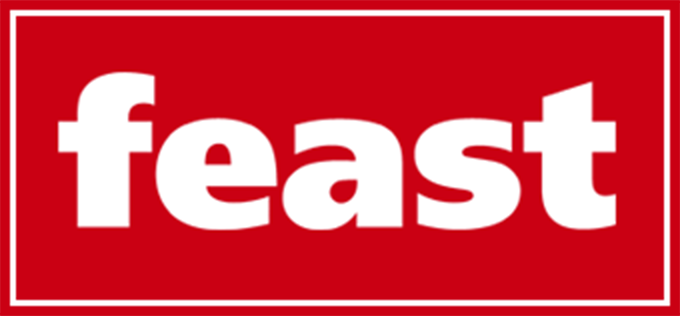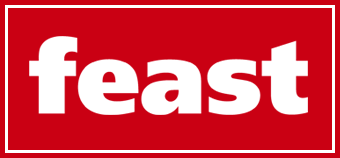Managing payroll can be one of the most time-consuming tasks for businesses, especially as teams grow. We know how critical it is to ensure employees are paid accurately and on time, but traditional payroll systems often come with inefficiencies that drain resources and increase the risk of errors. That’s why many companies are turning to innovative solutions to simplify and optimize their payroll processes.
With advancements in technology and the rise of automation, businesses are embracing tools that not only save time but also improve accuracy. From cloud-based platforms to AI-driven software, these solutions are transforming how organizations handle payroll. Let’s explore how these strategies are helping companies streamline their operations and focus on what truly matters—growth and success.
Understanding The Importance Of Efficient Payroll Systems
Efficient payroll systems ensure accurate employee compensation while reducing administrative burden. They minimize errors in calculations, deductions, and tax reporting, which reduces compliance risks and penalties. As teams grow, managing payroll without robust tools becomes time-consuming and prone to mistakes.
Streamlined payroll systems offer features like automated tax calculations, direct deposit options, and employee self-service portals. These features save time and increase transparency. For instance, cloud-based payroll software allows real-time updates to employee records and tax codes, ensuring data accuracy and regulatory compliance.
A good payroll system simplifies tasks such as managing employer identification numbers (EINs). Accurate EIN tracking is critical for preparing tax filings and complying with government regulations. Efficient systems integrate EIN management into automated workflows, reducing manual intervention. For businesses needing assistance with EIN-related processes, understanding how to find employer identification number ensures seamless tax preparation and compliance.
Businesses adopting advanced payroll solutions gain access to analytics for informed decision-making. Tracking payroll trends, overtime, and tax liabilities becomes painless. These insights improve operational efficiency and support strategic business goals.
Key Challenges In Traditional Payroll Management
Traditional payroll systems often involve labor-intensive processes that lead to common, recurring challenges. These issues impact accuracy, compliance, and resource management, creating inefficiencies for businesses of all sizes.
Manual Errors And Inefficiencies
Manual data entry increases the risk of errors in payroll processing. Incorrect employee details, wage calculations, or tax deductions can result in delayed payments and employee dissatisfaction.
Time-intensive tasks, such as calculating hours, managing tax withholdings, or reconciling discrepancies, make manual payroll processing inefficient. This slows down administrative workflow, especially for businesses managing large teams.
Traditional systems also lack real-time updates, making tasks like identifying a missing employer identification number (EIN) or updating employee information cumbersome. These limitations hinder operational efficiency and create frustration. Just as businesses seek modern solutions for payroll management, drivers use advanced accessories like an escort radar detector mount to enhance their driving experience by ensuring optimal device positioning and efficiency.
Compliance And Regulatory Issues
Frequent changes in tax laws and labor regulations present challenges for staying compliant. Traditional systems increase the likelihood of miscalculations or missed deadlines, leading to penalties.
For example, incorrect federal, state, or local tax filings can cause discrepancies that harm a company’s credibility. Limited integration with EIN management tools makes reconciling records with tax authorities more complex.
Without automated tracking features, businesses struggle to ensure accuracy in reporting and compliance audits. This increases administrative workloads and leaves companies vulnerable to significant financial risks.
Innovative Tools And Technologies For Streamlining Payroll Systems
Businesses leverage advanced tools and technologies to enhance efficiency and accuracy in payroll management. From cloud platforms to AI capabilities, these solutions address common payroll complexities effectively.
Cloud-Based Payroll Solutions
Cloud-based payroll platforms centralize and automate payroll processes, providing real-time access to critical data. These systems offer scalability, allowing businesses to manage payroll for teams of varying sizes without performance issues. Features like automatic software updates ensure compliance with changing tax regulations. Additionally, cloud platforms facilitate employee self-service portals, enabling access to pay stubs, tax forms, and direct deposit configurations. By storing sensitive information securely in the cloud, these systems reduce the risk of data breaches usually associated with traditional storage methods. Examples include solutions like QuickBooks Online and Gusto, which streamline payroll management with comprehensive functionalities.
Integration With Accounting Software
Seamless integration between payroll systems and accounting software improves operational workflows. It eliminates the need for manual data entry by automatically syncing payroll data, such as wages, tax withholdings, and benefit deductions, with financial records. Tools like Xero and FreshBooks offer robust integration features, ensuring accurate financial reporting and simplifying expense tracking for businesses. This interconnected approach reduces errors, saving time during audits and reconciliations. Furthermore, integrated systems support compliance by automating tax filings and generating reports critical for understanding tax liabilities. Businesses can track payroll costs in real-time, gaining insights that facilitate data-driven financial planning.
Automation And Artificial Intelligence
Automation and AI enhance payroll functions by minimizing manual intervention in repetitive tasks. Payroll automation simplifies calculations for wages, overtime, and tax withholdings while ensuring accurate payment processing. AI-powered systems streamline complex tasks, such as identifying missing employer identification numbers (EINs) or detecting anomalies in payroll activities. Predictive analytics, enabled by AI, helps employers forecast labor costs and optimize staffing decisions. Examples of tools integrating these technologies include Rippling and Workday, which improve payroll accuracy and enable compliance auditing for tax regulations. AI-driven chatbots also provide instant employee support, handling queries related to payroll or benefits efficiently.
Benefits Of Streamlined Payroll Systems

Photo by Frank van Hulst on Unsplash
Streamlined payroll systems transform traditional processes by improving efficiency, reducing errors, and enhancing employee experience. Let’s explore the key benefits.
Improved Accuracy And Compliance
Automated payroll systems ensure precise calculations for wages, deductions, and tax withholdings. Integration of tax compliance features prevents errors in reporting and filing, reducing the risk of penalties. Real-time updates, like those for employer identification number (EIN) verification, enhance accuracy during employee onboarding and tax filings. These systems also maintain compliance with changing labor laws, thanks to automatic updates. By minimizing human error, businesses ensure correct payroll processing and regulatory adherence.
Time And Cost Savings
With automated processes, payroll systems drastically cut administrative time spent on manual tasks like data entry and wage calculations. Cloud-based platforms centralize operations, enabling teams to focus on more strategic activities. Direct deposit features streamline payments, reducing check processing costs. By minimizing payroll errors, organizations avoid costly penalties and save resources that would otherwise go toward corrections, refunds, or audits. Additionally, efficient reporting tools optimize decision-making, which further decreases misallocated expenses.
Enhanced Employee Satisfaction
Accurate and timely payroll fosters trust among employees. Self-service portals empower team members to access pay stubs, update details, and resolve queries independently. Real-time transparency around tax deductions, benefits, and payments ensures employees are always informed. Automated notifications about payment schedules add to convenience. By reducing delays or errors, businesses can improve morale and engagement, which directly impacts employee retention and productivity.
Real-World Examples Of Payroll Streamlining In Businesses
Many companies have implemented modern payroll solutions to address inefficiencies and improve operational workflows. These examples show how businesses, both small and large, streamline payroll management for better outcomes.
Small Business Success Stories
A local retail chain implemented a cloud-based payroll platform to centralize operations. By automating tax withholdings and integrating with accounting software, the business reduced payroll errors by 30% within six months, avoiding common compliance issues like missing employer identification numbers (EINs). Self-service portals enabled employees to update personal details independently, saving over 20 hours per month in administrative tasks.
A family-owned restaurant digitized its payroll system using an AI-driven tool. It automated wage calculations and tip reporting, ensuring timely payments while staying compliant with varying state tax laws. The streamlined process reduced manual errors and improved overall employee satisfaction, evidenced by a 15% increase in positive feedback on payroll efficiency.
Enterprise-Level Optimizations
A global tech company adopted an AI-powered payroll system integrated with its enterprise resource planning (ERP) software. It automated payroll across 15 regions, ensuring compliance with complex international tax regulations. Real-time updates enabled seamless onboarding, with centralized workflows reducing the risk of duplicate or inaccurate employee data.
An e-commerce giant enhanced payroll accuracy by using predictive analytics and automated deductions tracking for overtime and benefits. The system cut processing times by 40%, enabling the HR team to allocate resources toward skill development initiatives. Tax compliance improved significantly as the system’s integrated EIN management workflow addressed reporting challenges in real-time.
Tips For Businesses Looking To Upgrade Their Payroll Systems
According to Forbes, leveraging modern payroll systems can significantly reduce administrative burdens and enhance compliance. Updating payroll systems empowers businesses to tackle inefficiencies and improve accuracy. Implementing the right strategies ensures smoother workflows and compliance.
Identifying Business Needs And Objectives
Understanding payroll requirements lays the groundwork for selecting an ideal solution. Businesses first assess current processes to identify inefficiencies, such as manual errors, delayed wage processing, or compliance challenges. For example, missing data like an employer identification number (EIN) can create delays and legal risks in tax submissions.
By evaluating team size, payment structures, and regulatory needs, businesses align their objectives with payroll upgrades. Clearly defining priorities—like automation, scalability, or integration with accounting tools—simplifies decision-making. Additionally, analytics features in modern platforms enable tracking trends and improving accuracy in critical areas like tax reporting and labor costs. Establishing clear goals ensures the chosen system supports both short-term demands and long-term growth.
Choosing The Right Payroll Solution Provider
Selecting a reliable payroll provider ensures seamless implementation and ongoing support. Providers should offer features tailored to business needs, such as automated updates, direct deposit options, and real-time reporting. For larger teams or multi-region operations, solutions like cloud-based platforms simplify compliance with varying labor laws. Integrated features for tracking employee data and EIN management help avoid missing federal tax deadlines. It’s essential to evaluate providers’ market reputation, customer support, and system scalability. Comparing features—including user-friendly self-service portals and accounting software integration—ensures efficient workflows. Providers like Rippling and Workday often stand out for comprehensive functionality and compliance support. Conducting thorough reviews, including user feedback, helps ensure the chosen solution optimally streamlines payroll processes.



